The country that produces Persian carpets is Iran, which is the modern name for Persia. The nation is recognized for its highly developed, centuries-old history of carpet weaving, with some of the best carpets displaying high knot counts and intricate designs. Persian carpets may be used in a range of modern and traditional homes because of its adaptability in terms of design, purpose, and color.
For those who enjoy carpets and want to know more about Persian carpet styles, here are the 13 famous types of Persian rugs.
A History & Exploration into the Various Types of Persian Rugs
Before explaining the amazing Persian rug types, let’s first dive into the history of Persian rugs:
A Persian Rug: What is it?
Persian rugs are handmade by craftsmen in modern-day Iran and have a rich, complex past. This robust weaving tradition has persisted across invasions and counterinvasions. Native Persians continue to produce carpets merely for the simple joy of expressing themselves.
They follow the same norms that have been followed since antiquity BC and are manufactured by nomads and shepherds.
The names of the places or locations where Persian carpets were produced are found on many of them. Every area has its own design aesthetic, color scheme, and motif, thus causing the founding of different types of Persian rugs. Although the rug makers themselves may not frequently leave their rural communities, their artistic creations speak a language that is understood by admirers of beauty all over the world.
Persian carpets are renowned for their elegance, fine craftsmanship, durability, and complex designs. We’ll go through the many various types of Persian carpets, what makes them special, and how to purchase one in this post.
How Are Persian Rugs Made?
Through hundreds of generations and thousands of years (Persian rug materials), the methods used to create Persian rugs have been refined.
It calls for a great deal of work, planning, and knowledge. There are many types of Persian rugs that are distinctive due to the materials and patterns employed in their creation.
1.Materials
Due to its delicate texture and durability, wool is the most popular material used to weave Persian carpets. Iran’s high-altitude, mountainous regions provide the best wool.
Cotton is the ideal material for the foundation of Persian carpets because, like wool, it is strong and widely available to Iranians.
Silk is the least probable fiber to be used in the weaving of Persian carpets since it is a premium item and is not frequently manufactured. To enhance the pattern of the rug, weavers often combine silk with different materials.
2.Color
Persian carpets are known for their vibrant hues and are created from natural materials including wool, silk, and vegetable dyes.
Large pans are used to cook natural ingredients like pomegranate, turmeric, acorn shells, and green leaves. The yarn is then manually dipped, giving each batch a distinct color. Vegetable dyes’ durability and natural look are advantages.
Madder is the most popular plant-based dye and may be used to produce all red hues.
Red and indigo are combined to produce a variety of hues in the purple range.
Brown wool that has already been dyed is dipped into indigo to create black.
Indigo serves as both a substrate for making other colors and the source of all blue hues.
The wool initially gets dyed blue, and then it receives a second yellow dyeing to produce green.
Different hues of yellow can be found in almonds, buckthorn berries, pear leaves and saffron.
Even now, certain families are renowned for producing unique hues that no one else can match. The knowledge of the family is passed down from one generation of people to the next.
During the making of a rug, a weaver frequently dyes many lots of wool, measuring the dyes by the handful and boiling them for various amounts of time. This approach naturally results in shadowing. Abrash, or the diversity of shades, is a telltale indicator of genuine weaving. These hue differences just enhance the end item’s appeal.
3.Designs
Additionally, symbolism—which is regarded as a trademark—is passed down through the generations. They include complex motifs that cover the full surface in conjunction with medallion themes.
Depending on various types of Persian rugs, symbols could be depictions of sacred trees, everyday sceneries, or historical structures. Popular trees like the pomegranate, cypress, and weeping willow are then shown as the Garden of Paradise or the Tree of Life.
The weaver’s tale might be related to when you can “read” the symbols and patterns of various types of Persian rugs. By correctly recognizing a rug’s symbols and patterns, some rug experts may ascertain the city and nation it came from as well as historical details.
Types of Persian Rugs
The city, town, or tribal territory in which a Persian rug was created determines the style the rug would have. Some of the best-known types of Persian rugs are listed below:
1.Gabbeh Rugs
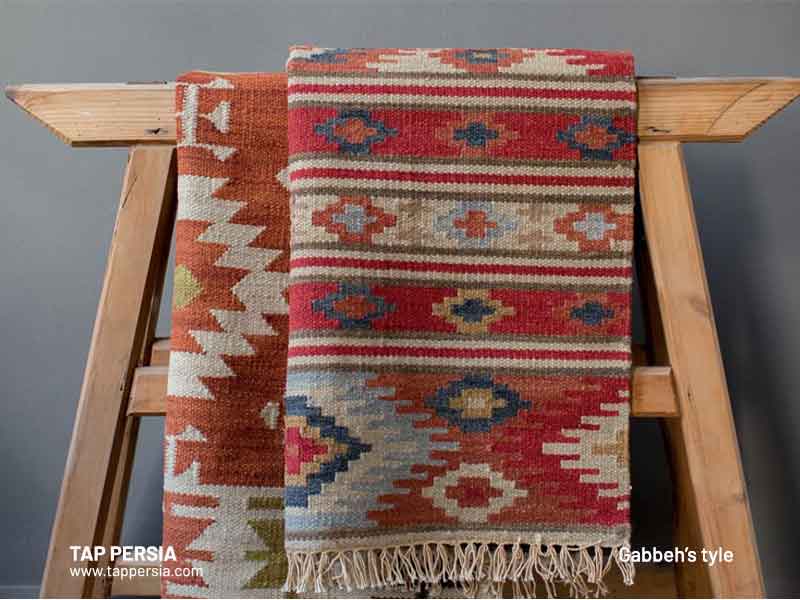
These Persian carpets are one of the best types of Persian carpets. It is made by Qashqai and Luri weavers in the Zagros Mountains, which explains the Gabbeh rug’s prominent tribal influence. Gabbeh rugs are made by weavers from hand-spun wool, which results in thick, coarse pieces.
Simple patterns are woven over a background of basic, vibrant colors in gabbeh carpets. Red, rust, rusty orange, and yellow are typical carpet colors. There are no synthetic dyes used.
2.Bakhtiari Rugs
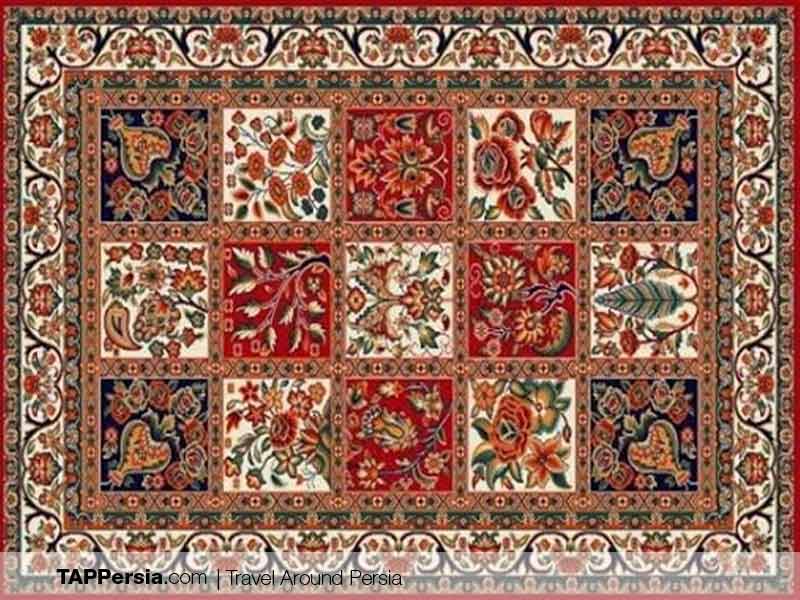
This is also one of the best types of Persian carpets. Carpets made by the Bakhtiari tribe in west-central Iran might include garden designs, tribal themes, or vibrant colors. The garden theme on a Bakhtiari rug is created by paneled medallions with flowers, animals, geometric trees or other beautiful patterns.
Rich reds and deep blues are possible color choices for this Persian rug pattern. Both colors can be complemented by highlights in yellow, brown, and green.
Turkish knots are used by Bakhtiari weavers to create their carpets. Additionally, they make the foundation out of cotton and the pile out of glossy, premium wool. Area rugs made by Bakhtiari can also have single or multiple wefts.
3.Bijar Rugs
The Kurds in the Iranian areas of Afsha and Gerus create Bijar carpets, commonly referred to as “The Iron Carpet of Iran.” These area rugs have twin wefts, making them significantly heavier, harder, and more durable than ordinary carpets. Craftsmen construct a compact pile by closely pounding a thicker weft and a thinner weft between rows of knots. They use cotton, wool, or camel wool to weave the foundation and create the pile.
Bijar carpets come in a wide range of distinctive designs and colors. You may discover lesser and much bigger sizes of these parts, as well as a variety of sizes.
4.Tabriz Rugs
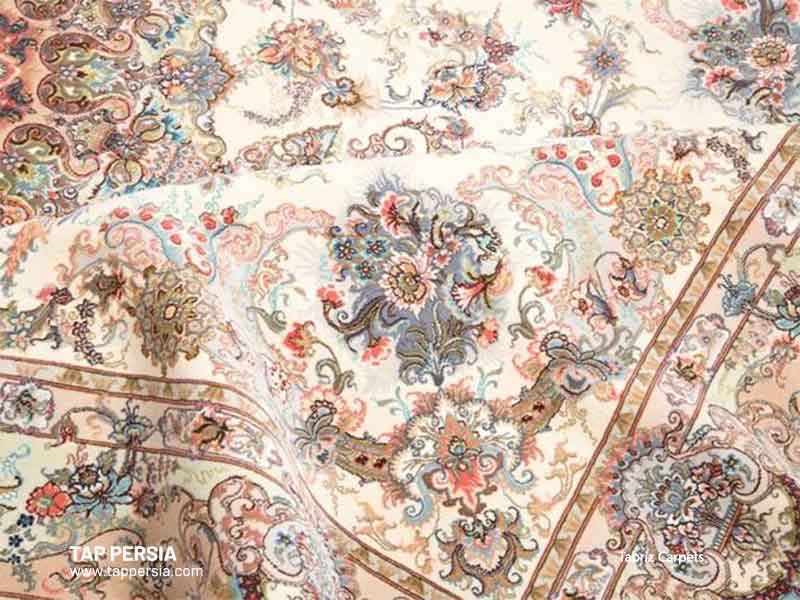
The city of Tabriz in northwest Iran is the source of one of the most well-known Persian carpets in the whole globe. These opulent, sophisticated carpets, which are made primarily of silk, are prized for their intricate, delicate Persian designs. Most of these carpets are so thin that they can be used as paintings and hung on walls, and their styles also permit this.
The majority of the most realistic and varied rug designs, including people’s faces on the carpets, can be found in Tabriz-designed and -produced carpets. The fact that Tabriz carpets are utilized as they are so luxury and attractive to be given as gifts is owing to the textiles being used, which are usually silk and allow for the creation of greater intricacies and accurate designs. This has always been the case throughout history, and it’s one of the things that made Persian carpets so well-known in the first place.
5.Senneh Rugs
Senneh carpets differ from other types of Persian rugs by having tight weaving with a delicate, silky pile and an irregular backside. The rug has a spotty back because weavers used thread to create the wefts.
As a result of the Senneh rugs’ beautiful and delicate structure, which includes fine and thin piles and strands, the designs are likewise minute and allover in nature.
Weeping willow, Boteh, the “Mirza Ali” rose, the “Vakili” flower, remarkable bird and flower forms, and other themes are among the varied and distinctive ones. In this region, medallions and Herati/Mahi patterns are typical as well. They utilize cotton for the warps and wefts and excellent hand-spun wool for the piles. The rugs and carpets from Senneh come in a variety of styles, including the greatest Kilims in Iran. They are all actually soft, harmonious colors in tones of orange, tan, dark blue, and red.
6.Kashan Rugs
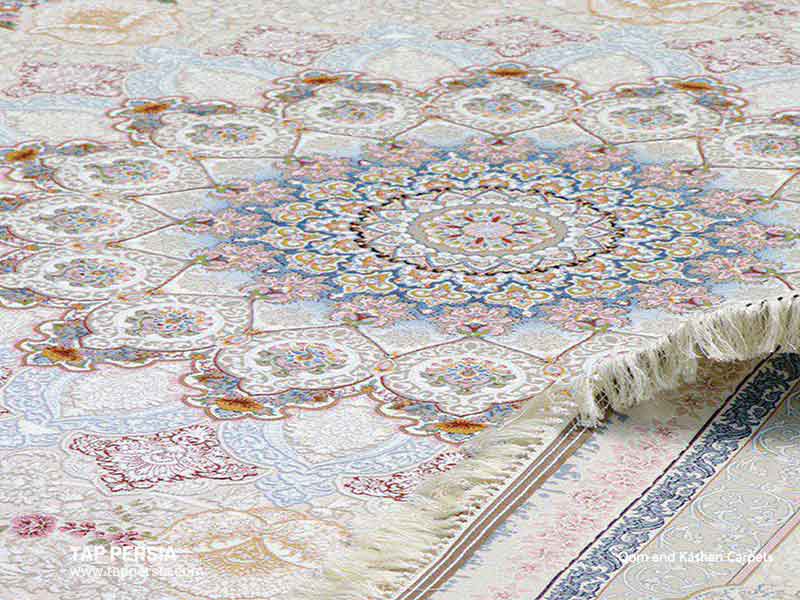
Along with the carpets themselves, Kashan’s carpet weaving tradition, which has been carried out primarily by women for generations, has become a popular tourist destination. The Kashan rug was developed in Iran and is now one of the most costly varieties of Persian carpets. These rugs often feature a wool or silk pile that is woven onto a cotton substrate and come in vivid shades of blue, white, and red. Usually, they have big center medallions and vivid, elaborate flower designs. These carpets tend to be regarded as the pinnacle of the traditional Persian rug since they are statement items.
7.Heriz Rugs
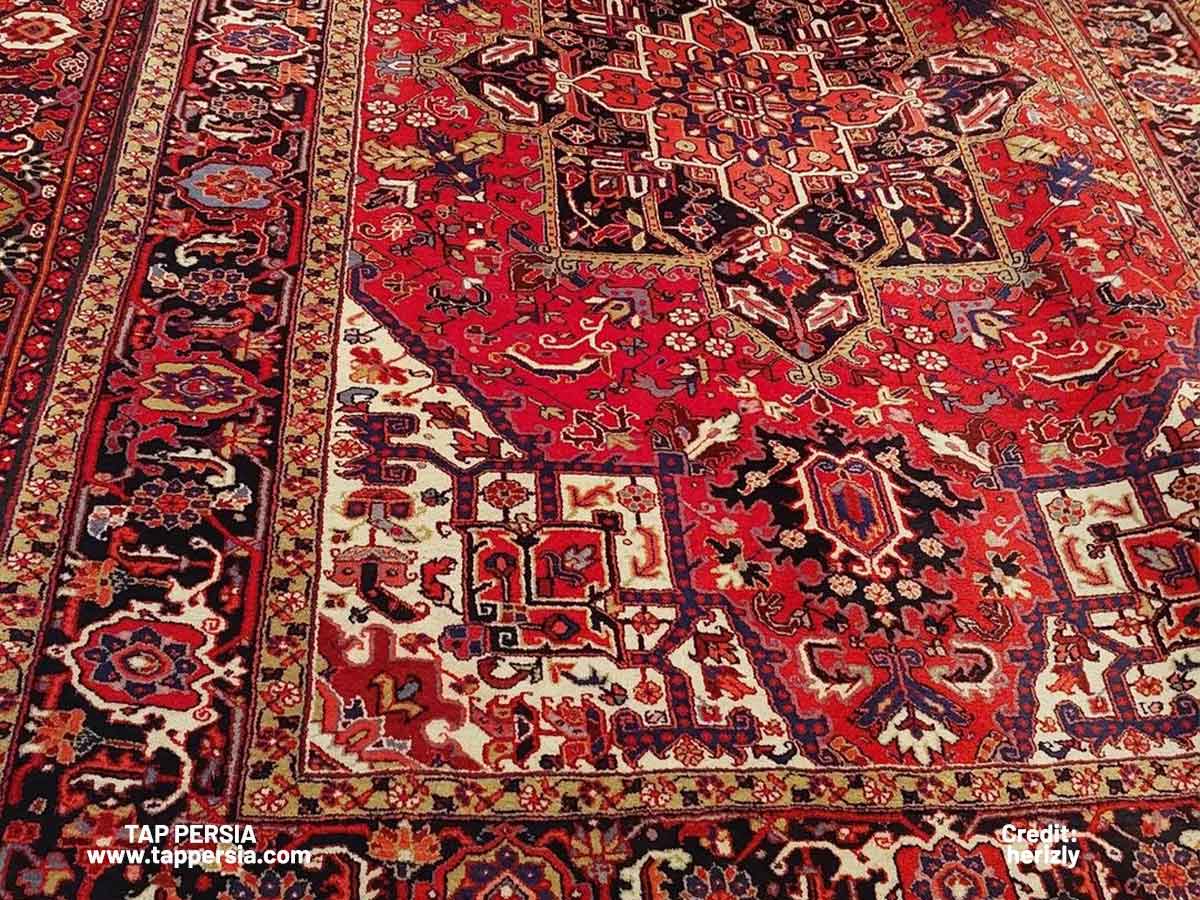
Heriz (Heris) rugs are often a bit bigger, more substantial, and very resistant. This is due to the high-quality wool yarn pile that is knotted onto a cotton warp. These types of Iranian carpets from the northwest work well in settings with lots of space, such dining rooms or living rooms. Considering that even a lot of shoes and feet do not significantly wear down these carpets over time, you can also picture them in public or frequently used spaces.
Heriz rugs have a very comparable style. As a result, they are easily recognized thanks to their distinctive appearance, which is a huge, straight medallion. This results in really attractive and captivating carpets that are gaining popularity.
8.Kerman Rugs
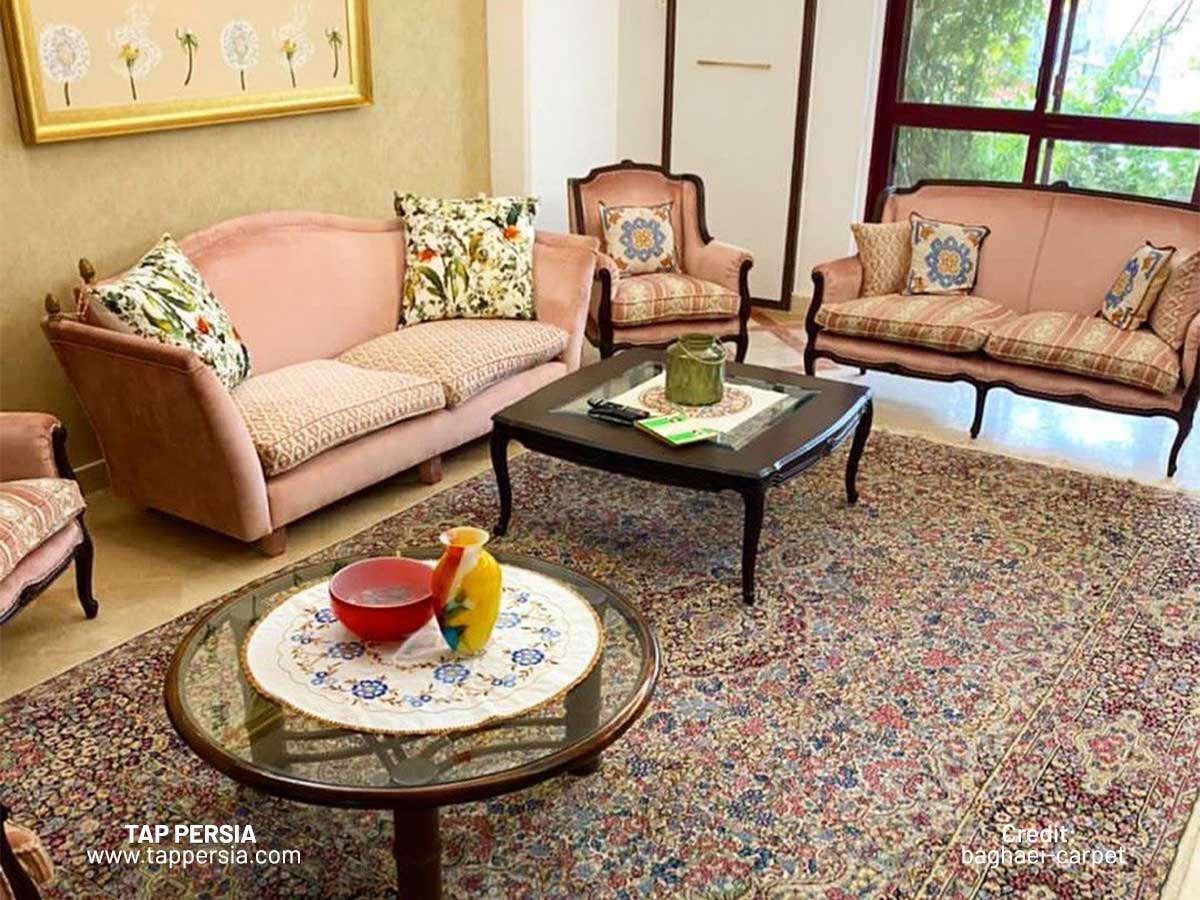
A long time ago, the greatest types of Persian carpets were thought to come from Kerman, a desert city far from Tehran. The quality of the city that was created in the fourth century is no longer equal to that of today. But it’s important to remember that these Persian carpets still belong to the very best category of hand-knotted carpets. One of the most significant trading hubs for merchants traveling to or from India once was Kerman. Carpet-knotting is still a significant aspect of Kerman culture today.
The bright red that predominates in Kerman rugs typically releases its full strength when combined with neutral tones like beige. Additionally, the carpets frequently have a medallion in the center that is surrounded by whimsical floral patterns. Thus, the pattern breathes color into the carpet. Cotton is frequently used for the warp and weft, while fine sheep’s’ wool is used for the pile. When compared to other Persian carpets, Kerman carpets have a midrange knot density starting at 160,000 knots per square meter.
9.Isfahan Rugs
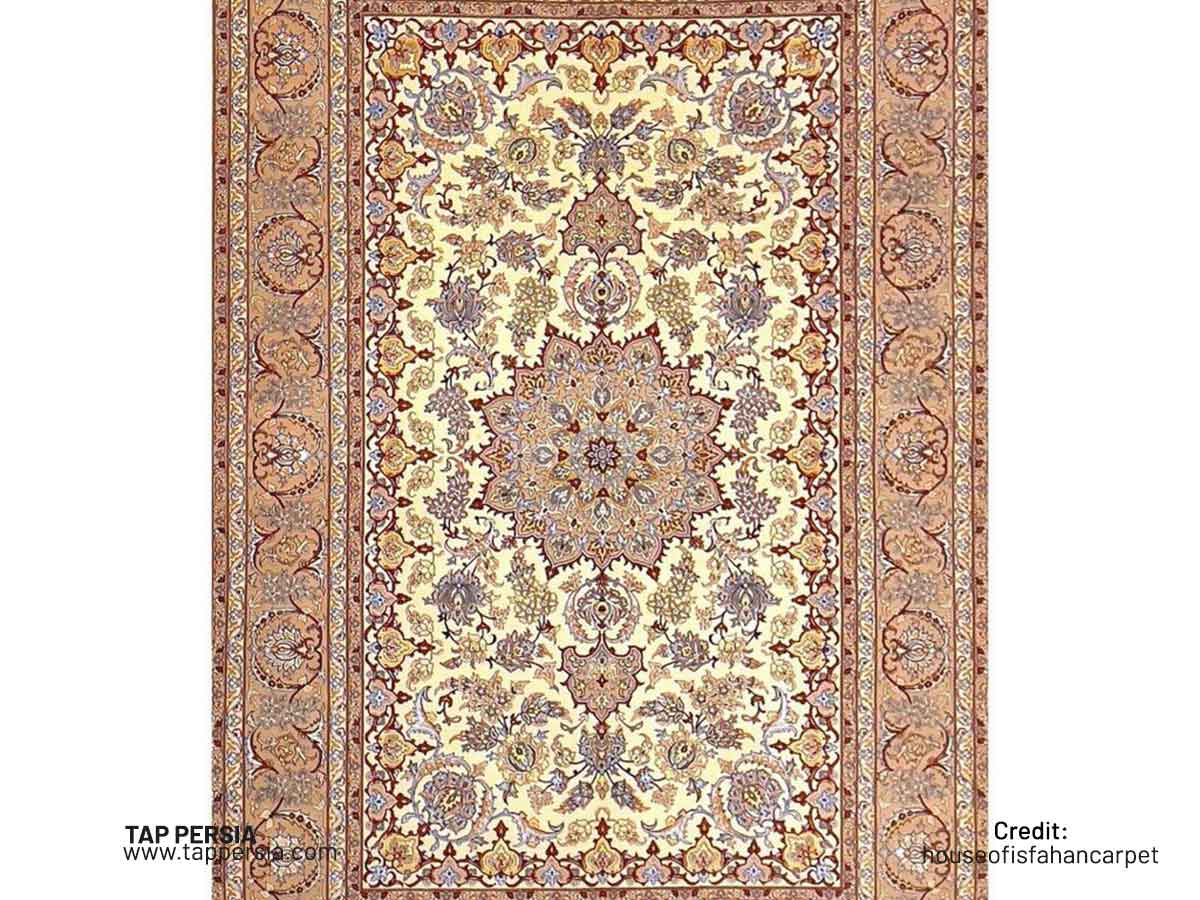
Persian hand-knotted carpets from Iran are unlike any other style of carpet in terms of popularity. The remarkable quality of a chosen few, though, makes them distinguished from the rest of the types of Persian rugs. The Isfahan region is home to one of them. A city with stunning architecture and carpets that shine just as brightly as the structures.
Carpets are made in factories using the best embellishments and patterns, many of which are inspired by the city itself. Few cities have such a high concentration of skilled knotters, who create some of the best hand-knotted carpets in the whole world. Isfahan carpets, which are among the finest of all, have a knotting density of up to 650,000 knots per square meter and are consequently among the most intricate.
Persian carpet knotters from Isfahan are well-known around the globe. Some of them include Davari, Seifarian, and Entescharf. There are also a huge number of carpet producers. The city’s commercial streets are lined with carpet merchants, who are popular with both visitors and residents.
10.Kilim Rugs
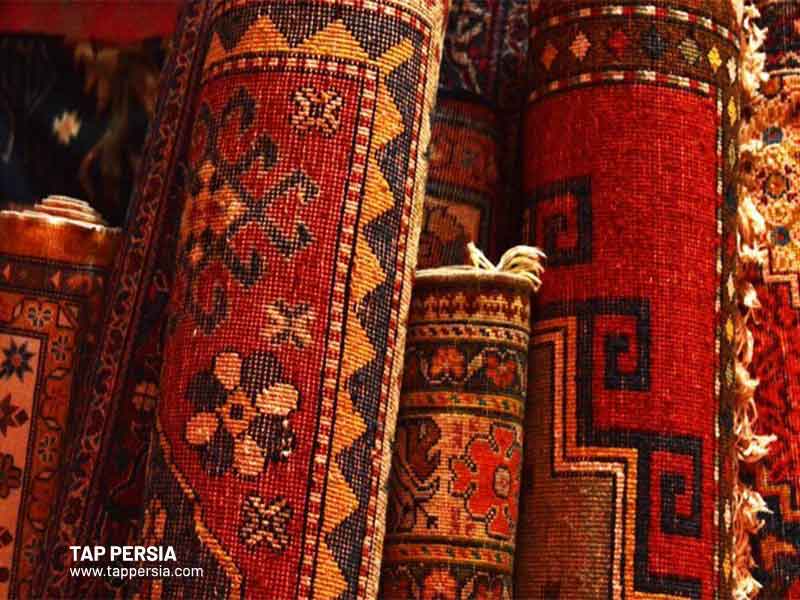
Traditional flat-woven carpets with no pile are known as Kilim rugs and are quite popular among various types of Iranian rugs. Like other rugs, Kilims are constructed by weaving variously colored weft and warp threads together rather than knotting the wool pile. They are hence lighter than other old Persian rugs.
Slitweave is another characteristic of a Kilim. Vertical slits along the margins of the design, which beautifully highlight the striking geometric patterns, may be seen if you pay great attention to it. Each rug is a swirl of brilliant colors and eye-catching designs, including animals, geometric shapes, floral motifs, and rough portrayals of natural events.
The feelings and tales of the weavers who created the Kilims, however, are what really make them special. The pictures stand for fertility, happiness, peace, fertility, good fortune, and safety from harm. Kilims are more than simply beautiful ornamental items; they provide a window into the life of the civilizations and people that shaped history.
11.Sarouk Rugs
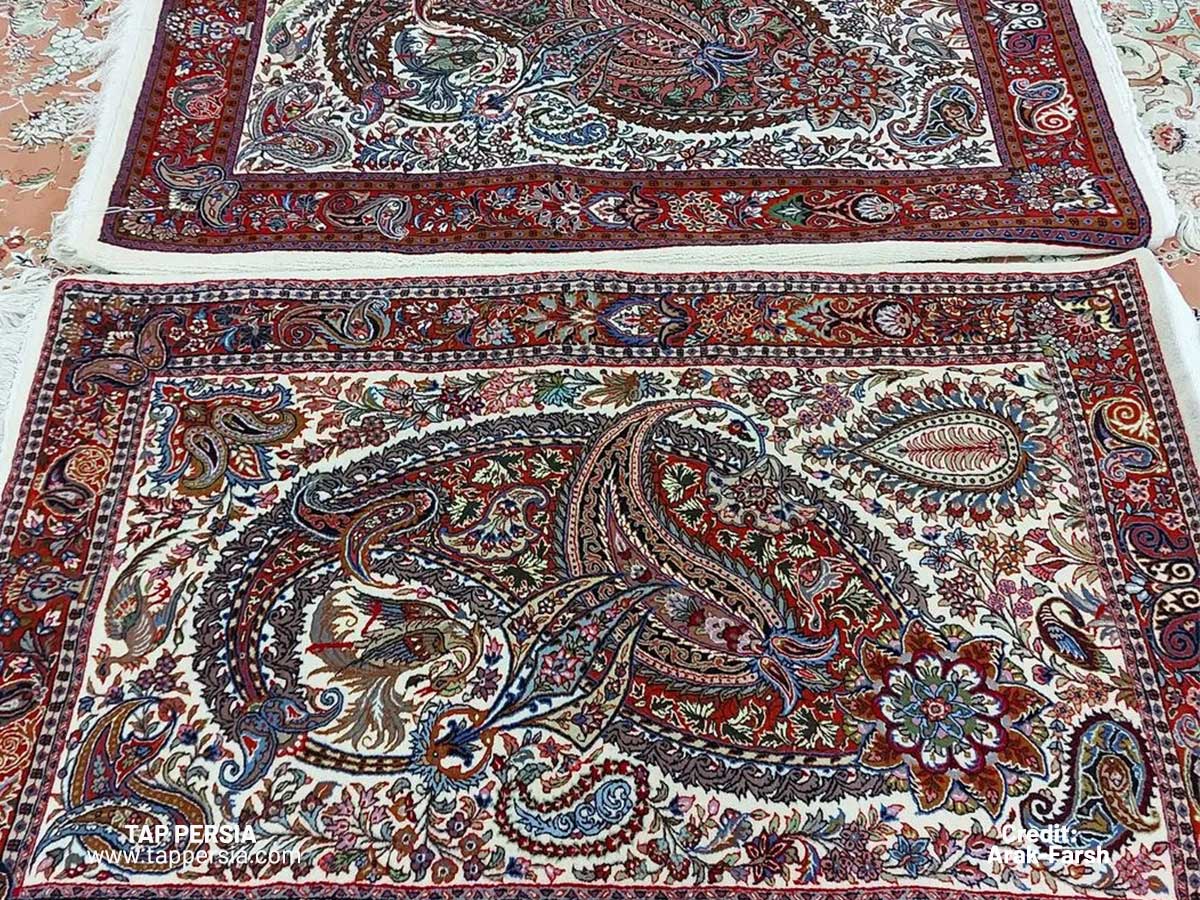
Due to the allure of their colors, softness, and superior wool quality, Sarouk carpets are loved in the West. Sarouk hand woven carpets include intricate designs and vivid colors. They might make a really lovely decorative element for your floor, whether they are in the entrance, living room, or dining room.
They are simple to blend with classic or neutral environments and available with both medallion and all-over design patterns. Sarouk, a sizable hamlet in west-central Iran, is known for making the best rugs in the area.
Only carpets that are exceptional enough to live up to the Sarouk reputation are awarded the Sarouk name in the marketplace. The fact that the wool used to make these types of Persian rugs is so strong and glossy, together with the extremely delicate and meticulous knotting, may be the primary reason why they all endure so long.
12.Nain Rugs
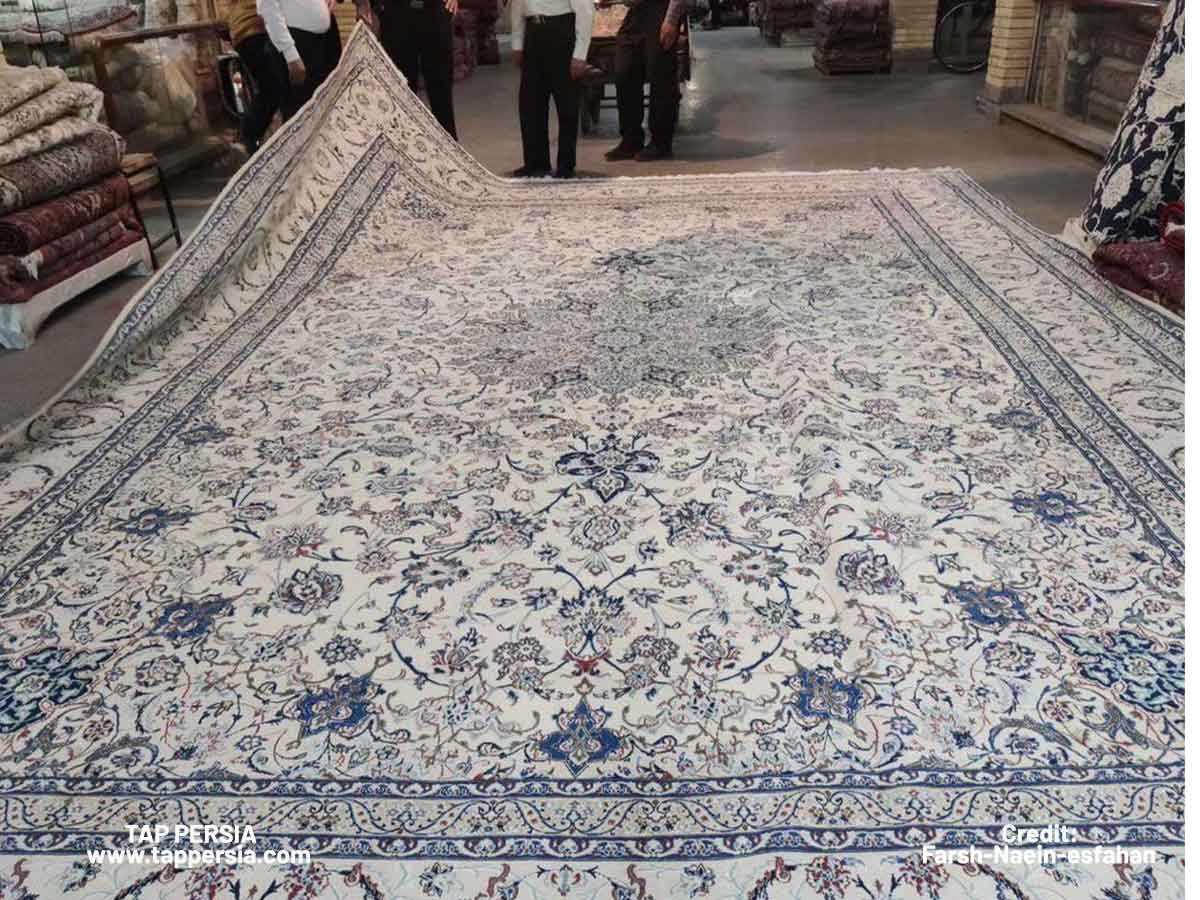
Nain carpets are divided into classes according to their own classification. Four different knotting densities are distinguished: 4La, 6La, 9La, and 12La. The rule is that the carpet will be of higher quality and more elaborateness the fewer the number. The finest skilled weavers in the nation spend a whole year creating such marvels. The corresponding knotting density on the carpet fringes is adjustable. A fringe is considered to be 4La if it has two or fewer threads. You have a 6La in front of you, but she is actually constructed of three.
Rug experts prize Nain carpets for their high level of craftsmanship and exquisite knotting. A center medallion is encircled by floral designs in traditional Nain patterns. The similarities to rugs from the adjacent city of Isfahan cannot be disputed. Typically, Nain carpets have surface dyes that are red, blue, or beige. Fine Nain carpets made only of silk are particularly exquisite. These silk carpets are obviously more expensive than, say, ones made of wool. If you’re seeking for a specific kind of luxury, Nain carpets provide everything you need.
13.Mashhad Rugs
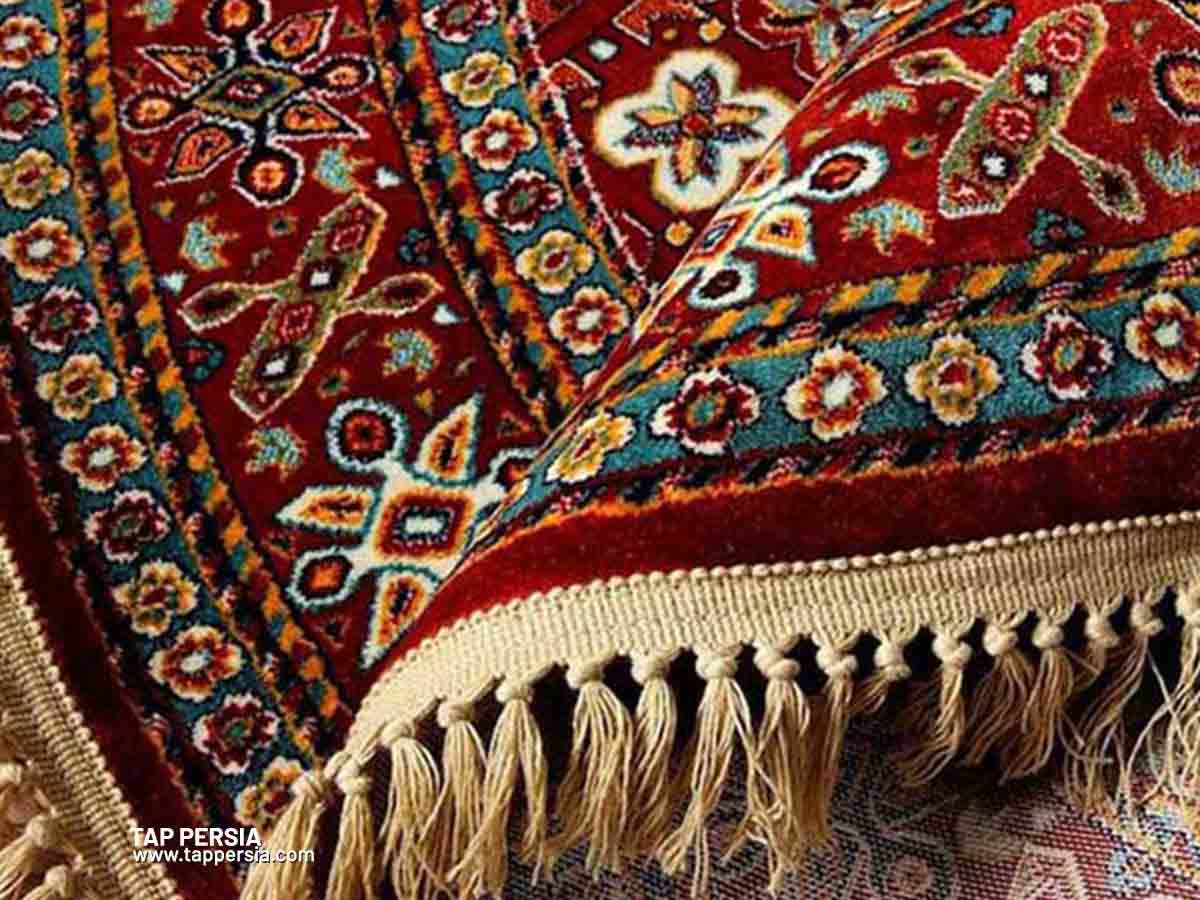
Mashhad, in eastern Iran, which was once a little town, has grown into a metropolis with two million residents. It is possibly the most holy location in Iran since it contains the grave of the eighth Imam. Over 10 million pilgrims travel to the grave and live in the city each year.
There are several Persian carpets produced in Mashhad, and they have a variety of features. Among the best in the nation is the wool produced in the Khorasan area, where Mashhad is located. It imparts a particularly silky texture to the Mashhad carpets. Khaki, dark red, and blue are the predominant colors.
These type of Persian carpets are frequently knotted in big proportions and feature floral designs around a center medallion. But generally speaking, all sizes of Mashhad carpets are available. The density of the knots should be taken into consideration while purchasing a high-quality Mashhad carpet. The quality of the knotted carpet increases with elevation.
What is the best type of Persian rug?
All Persian carpets are expensive and beautiful, but the ancient Kerman Persian rug is without a doubt the nicest type of Persian rug.
How do I know what kind of Persian rug I have?
Simply said, genuine Persian rugs don’t have sewn-on fringes. Given that they are created by the ends of the warp threads, the fringes are a crucial part of the carpet. If the fringes appear to be sewed on to the backside of the rug, then it’s very likely that it is not an authentic oriental rug.
What type of Persian rug is the most valuable?
The most money ever spent on a rug was paid for an ancient Kerman rug from the 17th century, making it the most valuable of the Persian rugs.
How do I identify a Tabriz rug?
Trimmed heaps are typically used to manufacture Tabriz carpets. Trimmed heaps make rugs appear lighter.
The little metal hook that is used to tie the knots of these specific carpets allows you to see an incredible degree of precision and regularity in the weaving.
A variety of colors are another attribute of Tabriz carpets. The carpets from Tabriz come in a variety of cool and brilliant colors.
Turkish knots, as opposed to Persian knots, are used by weavers of Tabriz carpets.
Are all Persian rugs different?
There is a wide variety of Persian carpet styles. The name of the village, tribe, or city where the designs were historically manufactured appears on the majority of their creations. Isfahan, Nain, Kerman, Tabriz, Kashan and Mashhad are some of the places mentioned. Every area uses a different set of distinctive designs and patterns while producing its carpets.
Are Turkish rugs better than Persian?
Iran is unsurpassed when it comes to producing high-quality handmade carpets.
What country makes the best Persian rugs?
Iran
There’s a solid reason why “rug” and “Persian” are often used interchangeably.
Are all Persian rugs made in Iran?
The term “true Persian rugs” may only be used to describe rugs produced in Iran’s Middle Eastern area.
How do I know if my Persian rug is expensive?
Generally speaking, a rug’s value increases with the number of knots. There exists a comprehensive article that elucidates the reasons behind the high cost of Persian rugs.
How can you tell if a Persian rug is real?
Genuine Persian carpets will feature a plush backing and a design that is mirrored on both sides.




Comment (0)